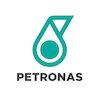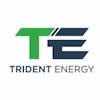Eliminating routine flaring in Ghana
Routine flaring is a longstanding method of disposing of excess gas generated during oil production when processing capacity is insufficient for sale or use as an energy source. Tullow Oil’s strategy to eliminate routine flaring in Ghana is centred on increasing gas processing capacity at the Jubilee and TEN fields. Implementing the necessary modifications requires temporary operational stoppages at each site to allow for equipment upgrades.
In 2023, Tullow Oil completed the required modifications at the TEN field, enabling the elimination of routine flaring by 2025. Most of the necessary upgrades at the Jubilee field have been completed, with the remaining enhancements scheduled for early 2025.
On the Jubilee floating production offtake vessel (FPSO), six gas compressor motors were replaced with larger electric motor drivers, and a high-capacity compression wheel was installed on different units, increasing gas processing capacity by approximately 35%. These enhancements ensure the upgraded compressors can process the anticipated higher gas flow from current and new production wells. Additionally, gas dehydration capacity was expanded by repurposing an unused process vessel. A final expansion of the intermediate gas cooling system is planned for early 2025.
At the TEN FPSO, modifications were made to allow the routing of low-pressure separated gas into the gas compression system. Previously, excess low-pressure gas had to be flared, but with these upgrades, both high- and low-pressure gases can be processed, eliminating the need for flaring.
These improvements position Tullow Oil to eliminate routine flaring by 2025, with final capacity modifications expected during the next planned Jubilee FPSO shutdown in early 2025.
Learn more






